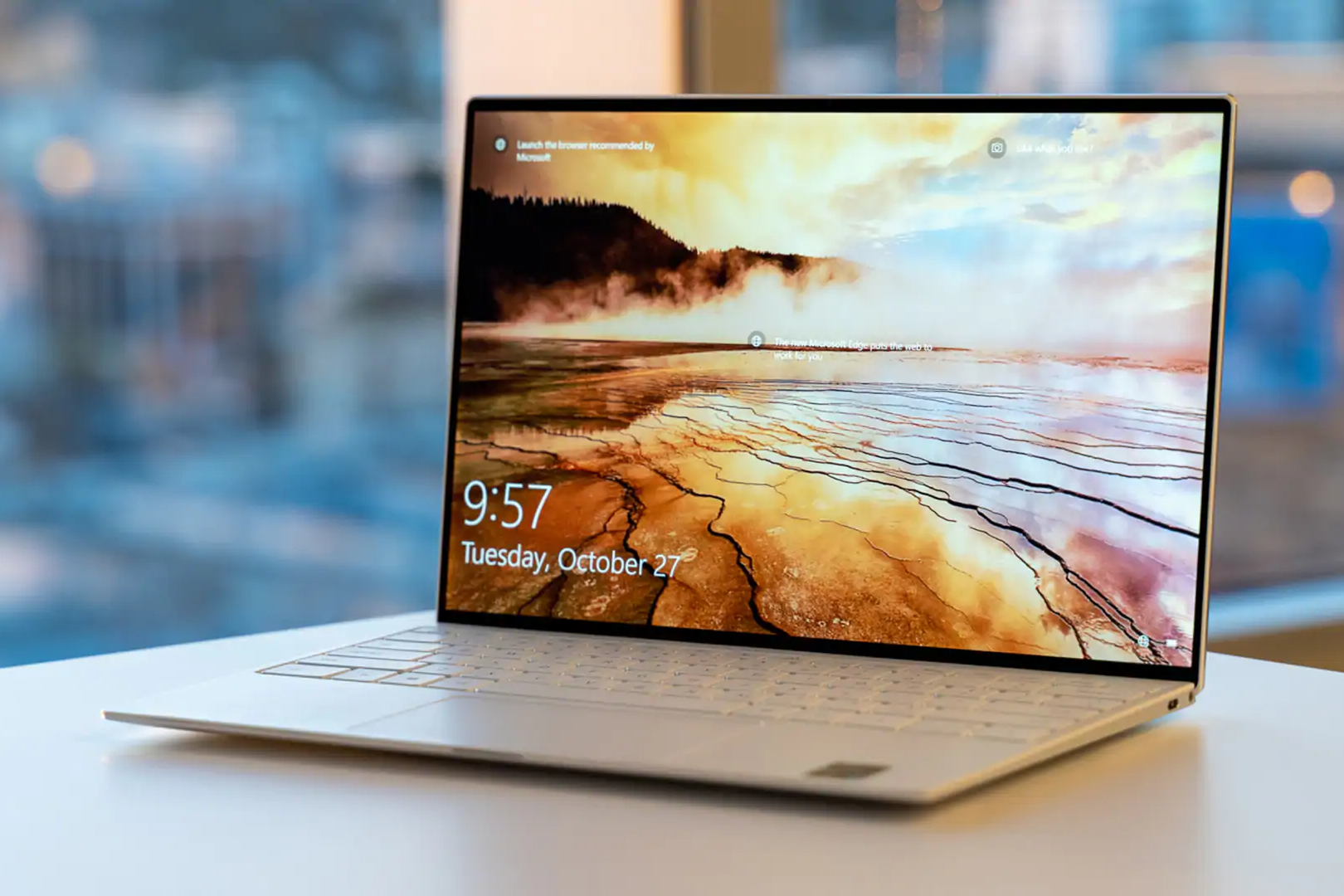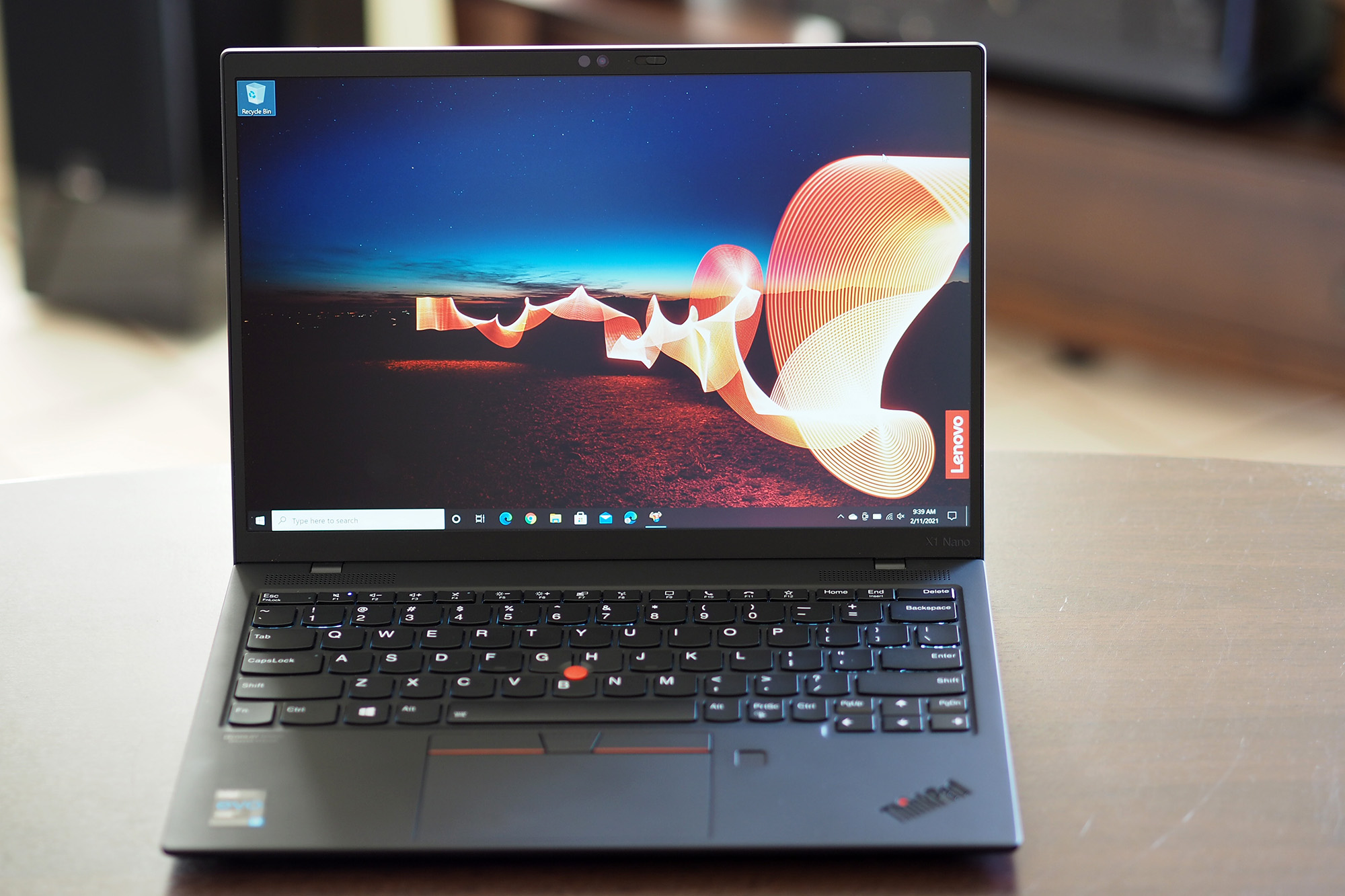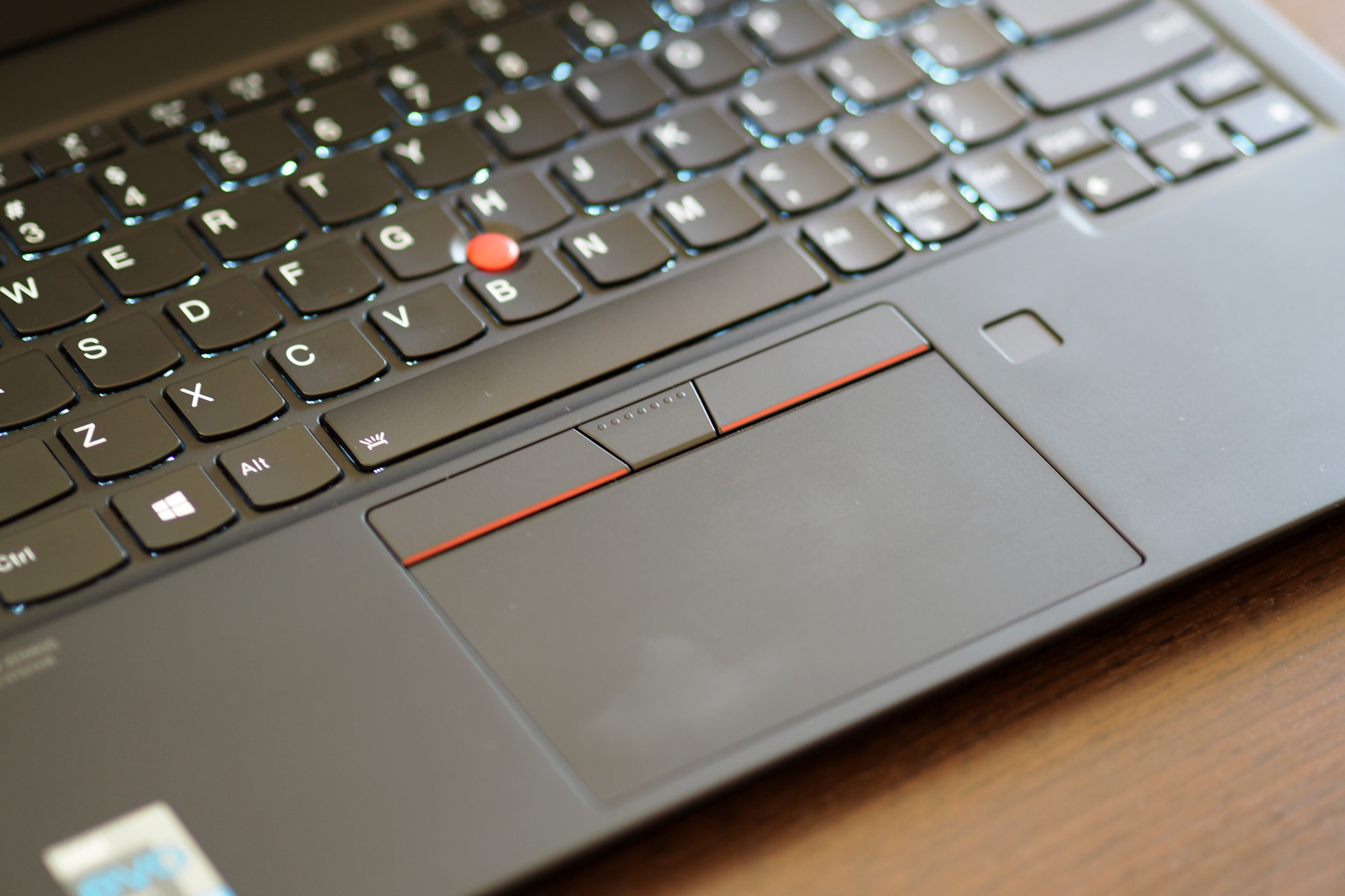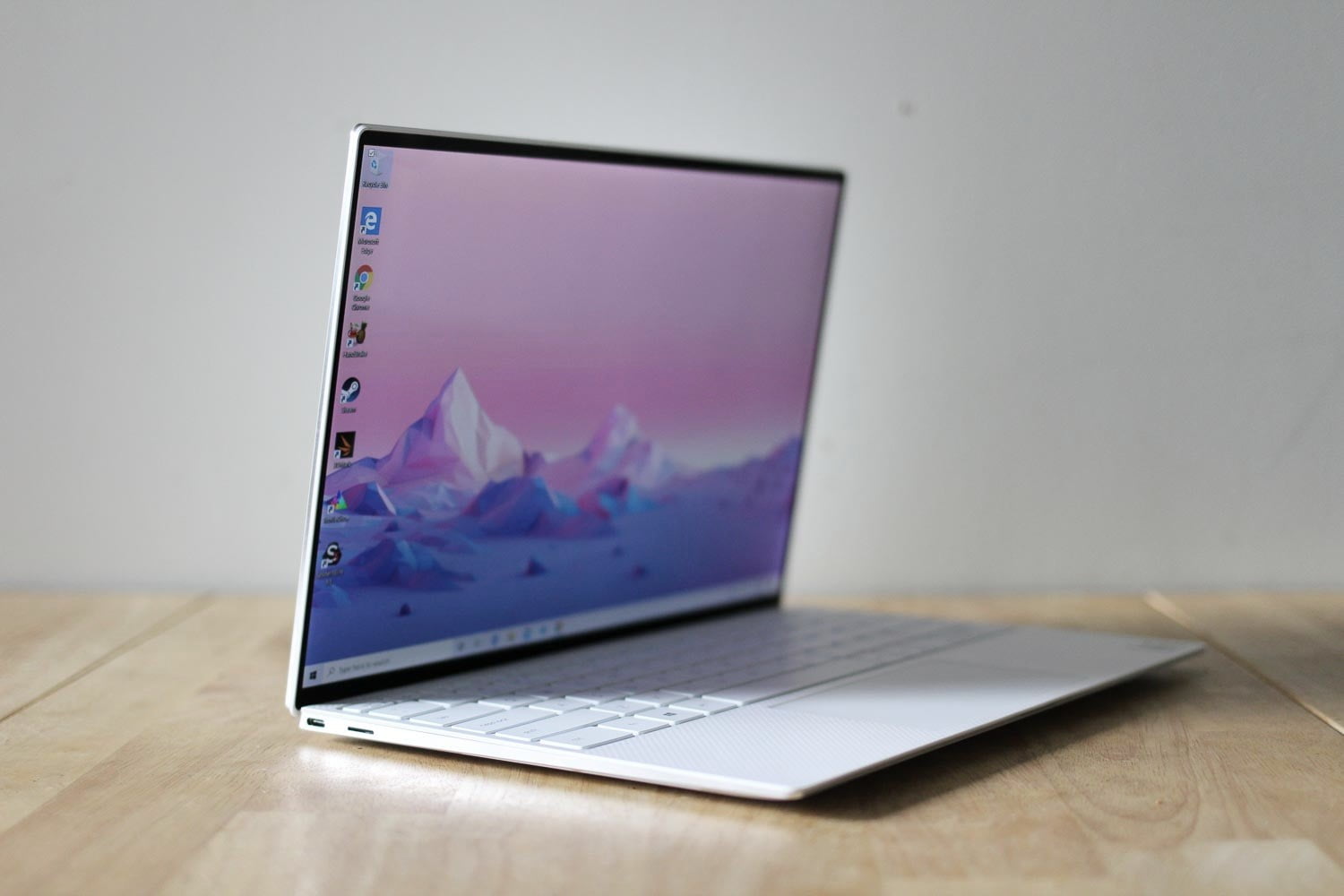Dell’s XPS 13 has reigned over the 13-inch laptop scene for a few years now, offering the best combination of size, design, and performance of any laptop in the class and fending off competitor after competitor. Lenovo wants to change that with the introduction of the ThinkPad X1 Nano, which aims to provide a similar mix of attributes along with that special ThinkPad panache.
Taking on the best laptop on the market is a all order for the ThinkPad X1 Nano. Can it compete with the XPS 13, or does Dell manage to maintain its superiority?
Design

The ThinkPad X1 Nano is a ThinkPad through and through. It boasts the same black-on-black aesthetic with a few red accents — there’s the flashing LED “i” in the ThinkPad logo on the lid and the TrackPoint nubbin, but without the usual red strips on the TrackPoint buttons. It’s iconic and immediately recognizable, but very conservative, and unless you really love the look, it is a little uninspired. The XPS 13, on the other hand, is sports-car sleek, angled in all the right places, and available with either a silver lid and a black keyboard deck or as an all-white model.
In terms of build quality, these are two of the best you can buy. The ThinkPad X1 Nano uses a hybrid carbon-fiber material in the lid and a magnesium-aluminum alloy in the rest of the chassis. The XPS 13, on the other hand, sports an all-aluminum chassis with carbon fiber on the keyboard deck for some added comfort (the ThinkPad also enjoys a soft-touch feel throughout the chassis).
Both laptops resist bending, flexing, and twisting in the lid, the keyboard deck, and the chassis bottom — they feel as robust as you’ll find in the 13-inch class.

In terms of their sizes, the XPS 13 is the smaller of the two. This is despite its having a larger 13.4-inch display in a 16:10 aspect ratio compared to the 13-inch, 16:10 display on the ThinkPad X1 Nano. The Dell benefits from its much smaller and more modern-looking bezels, managing to be slightly less deep than the Lenovo but almost equally as wide.
The XPS 13 is also thinner at 0.58 inches, where the ThinkPad X1 Nano tapers from 0.55 inches to 0.68 inches. The ThinkPad X1 Nano wins out in terms of its incredibly light weight at just 1.99 pounds, compared to the XPS 13’s 2.8 pounds. It’s a significant difference and makes the Lenovo a pleasant laptop to carry around.
Both laptops are limited to just two USB-C 4 ports with Thunderbolt 4 support, although the XPS 13 has one on each side rather than both on the same side as does the ThinkPad X1 Nano. That gives the Dell a little more flexibility in terms of plugging in the charger. The XPS 13 also has a microSD card reader, which the ThinkPad X1 Nano lacks. Both laptops offer Wi-Fi 6 and Bluetooth 5, while the ThinkPad X1 Nano also has 4G and 5G WWAN connectivity via an optional SIM slot along the back.
Performance

Both laptops are built around Intel’s 11th-gen Tiger Lake CPUs with Intel Iris Xe graphics. That makes them fast, efficient and stronger in graphics than previous Intel U-series laptops. The Dell XPS 13 we reviewed was equipped with the Core i7-1165G7, the second-fastest Core i7 you can buy. The ThinkPad X1 Nano, on the other hand, used the Core i7-1160G7, a slower-clocked and lower-TDP version of the same chip.
Surprisingly, the performance was remarkably similar. In all our benchmarks, including Cinebench R23 and our Handbrake encoding test, the ThinkPad X1 Nano and XPS 13 were within a few percentage points of each other. Most likely, the small chassis and need for thermal management meant that the XPS 13 couldn’t keep its faster CPU at full throttle, and so both laptops ended up running at similar speeds.
Both laptops are also competitive with other Tiger Lake machines of whatever size. They’re not as fast as some, but they’re not so far off that you’d feel like you’re giving up performance to enjoy the small chassis that both offer up. The bottom line is that you needn’t fret about being slowed down when you’re choosing between these two diminutive laptops.
One caveat is that neither laptop was particularly quick at gaming compared to some other Tiger Lake machines. In Fortnite, for example, the ThinkPad X1 Nano was a little faster at 31 frames per second (fps) at 1080p and high graphics, compared to the XPS 13 at 29 fps. Some other Tiger Lake laptops hit 35 fps or faster.
Display

The ThinkPad X1 Nano and XPS 13 embrace the increasingly popular taller display, in this case, the 16:10 aspect ratio that is slightly taller than the old-school 16:9. The ThinkPad’s panel is just 13 inches at a 2K resolution of 2,560 x 1,350, and that’s the only option. The XPS 13’s display is 13.4 inches and offers a choice between Full HD+ (1,920 x 1,200) and UHD+ (3,840 x 2,400) resolutions. We tested both.
Again, the ThinkPad X1 Nano’s 2K and XPS 13’s Full HD+ displays were very similar in their performance. They enjoyed almost identical color gamuts at 74% of AdobeRGB and 98% of sRGB for the ThinkPad and 75% of AdobeRGB and 98% of sRGB for the XPS 13. Color accuracy was also similar at a DeltaE of 1.31 for the ThinkPad and 1.36 for the XPS 13. The ThinkPad’s display was bright at 414 nits, and the XPS 13’s was quite a bit brighter at 458 nits. Stepping up to the XPS 13’s 4K display widened the color gamut (79% and 100%) and slightly improved accuracy at 1.21, but brightness dropped to 420 nits. Both XPS 13 displays exceeded a 1300:1 contrast ratio, while the ThinkPad X1 Nano’s display came in at a lesser (but still decent) 980:1.
Really, all three displays are at least average for premium panels, and in some metrics, superior. The ThinkPad X1 Nano’s display beats out the XPS 13’s Full HD+ thanks mainly to its higher resolution, while the XPS 13’s 4K display is the best of the three. All are quite pleasant to use, though, and so your choice comes down to which resolution you prefer — and, as we’ll see, the impact on battery life that results.
Keyboard and touchpad
The ThinkPad X1 Nano has a version of the usual excellent ThinkPad keyboard that seems identical — with nicely spaced sculpted keys and a very similar mechanism — but the travel seems slightly reduced. That’s actually a good thing if you prefer a lighter feel, and the ThinkPad’s keyboard is subsequently very comfortable and precise.
The XPS 13 received a new keyboard in this version, with larger keycaps and improved key spacing. The most welcome change, though, comes via the improved key switches, which are very responsive and have a nice click — and are thus also very comfortable and precise.

The XPS 13 enjoys a slightly larger touchpad thanks to the increased palm rest space due to the taller display. It’s not a lot, but the extra space is welcome. As a Microsoft Precision touchpad, Windows 10 multitouch gestures are reliable and responsive. The ThinkPad X1 Nano also has extra palm deck space, but its TrackPoint nubbin buttons take up quite a bit of it, and so its touchpad remains smaller than the XPS 13’s. That’s great if you like the TrackPoint — and many ThinkPad fans do — but if not, then you’re giving up swiping space for nothing.
Note that Dell offers two touch display options, one Full HD+ and one UHD+, while Lenovo offers none. If you’re a fan of touch displays, then Dell accommodates and Lenovo does not.
Battery life

The ThinkPad X1 Nano has 48 watt-hours of battery capacity packed away inside its tiny chassis, while the Dell XPS 13 has 52 watt-hours. The Lenovo benefits from a lower-powered CPU, so one might expect similar battery life between these two machines. The differentiator, in this case, would normally be display resolution, where the XPS 13 is available in a lower-resolution Full HD+ compared to the ThinkPad X1 Nano’s default 2K display.
In fact, our results were mixed. In our PCMark 10 Gaming test, which stresses the CPU and GPU, the two laptops were within one second of each other. Both hit nearly four hours of battery life. So far, that’s the best we’ve seen in this test among Tiger Lake laptops, with the 4K Dell XPS 13 coming in at about 30 seconds less. Most laptops we’ve tested ran for less than half that time, meaning that neither of these laptops is pushing itself quite as hard during this test.
Unfortunately, the ThinkPad X1 Nano wouldn’t run the PCMark Applications test, and so we can’t compare it with the XPS 13 using our best productivity battery life test. In our web-browsing benchmark, though, our second-best test of productivity longevity, the ThinkPad X1 Nano ran for just over seven hours, while the XPS 13 Full HD+ managed more than an hour longer.
However, in our video test that loops a Full HD trailer until the laptop hibernates, the ThinkPad X1 Nano lasted for a full 18 hours, compared to the XPS 13’s 12 hours. We’re not sure how Lenovo managed to squeeze so much more time out of a higher-resolution display and a smaller battery, but there you are.
Both laptops will likely get you through most of a full day’s work as long as you’re not pushing the CPU or GPU too hard. Both can also be charged with standard laptop USB-C chargers (the XPS 13 ships with just a 45-watt charger compared to the ThinkPad’s 60-watt charger), and so you aren’t tied to a proprietary charger with either machine. Generally speaking, though, outside of watching video, battery life isn’t going to be the reason you choose one or the other.
Price
When comparing prices lately, you have to look closely at a laptop’s retail price and the price being offered at any given time on the company’s website. Most often, there’s little correlation between the two prices, and rarely is the retail price what you’re going to pay for a laptop. For example, the ThinkPad X1 Nano starts specs-wise at a “web price” of $2,499 for a Core i5-1130G7 CPU, 8GB of RAM, a 256GB GB SSD, and 2K display. But its price after “eCoupon” is $1,380. Lenovo then has a configuration listed with a Core i5, 16GB of RAM, and a 512GB SSD for $1,150 (web price $2,919). The laptop maxes out at $2,231 after eCoupon (web price $3,719) for a Core i7-1180G7 CPU, 16GB of RAM, and a 1TB SSD.
The Dell XPS 13 also lists a retail price and a sale price, but the two are closer together. It starts out at $1,077 ($1,099 retail) for a Core i5-1135G7 CPU, 8GB of RAM, a 2GB SSD, and a nontouch Full HD+ display, while maxing out at $2,155 (retail $2,199) for a Core i7-1185G7 CPU, 32GB of RAM, a 1TB SSD, and a 4K touch display.
Clearly, the XPS 13 is the more economical of the two laptops. The ThinkPad X1 line is typically on the high end of premium, and the ThinkPad X1 Nano is no different. You’re going to spend more money on the ThinkPad, and you’re not going to get as much computer. That’s an important factor given how close these two laptops are in so many other areas.
Dell’s XPS 13 maintains its top spot

The ThinkPad X1 Nano is a bold attempt at attacking the 13-inch laptop market. It’s small, incredibly light, performs well, and has decent-to-very good battery life depending on how you use it. It’s also built well and has that iconic ThinkPad look and feel.
But the Dell XPS 13 matches the ThinkPad nearly blow-for-blow, with equally good build quality, better looks (in our opinion), equal performance, and better battery life unless you’re watching video. The keyboard’s better, as is the touchpad, and you’ll enjoy a larger 16:10 display with equal or better quality — not to mention the much better 4K option.
In the final analysis, the ThinkPad X1 Nano puts up a good fight, but the XPS 13 holds onto its top spot as the best 13-inch laptop money can buy.


